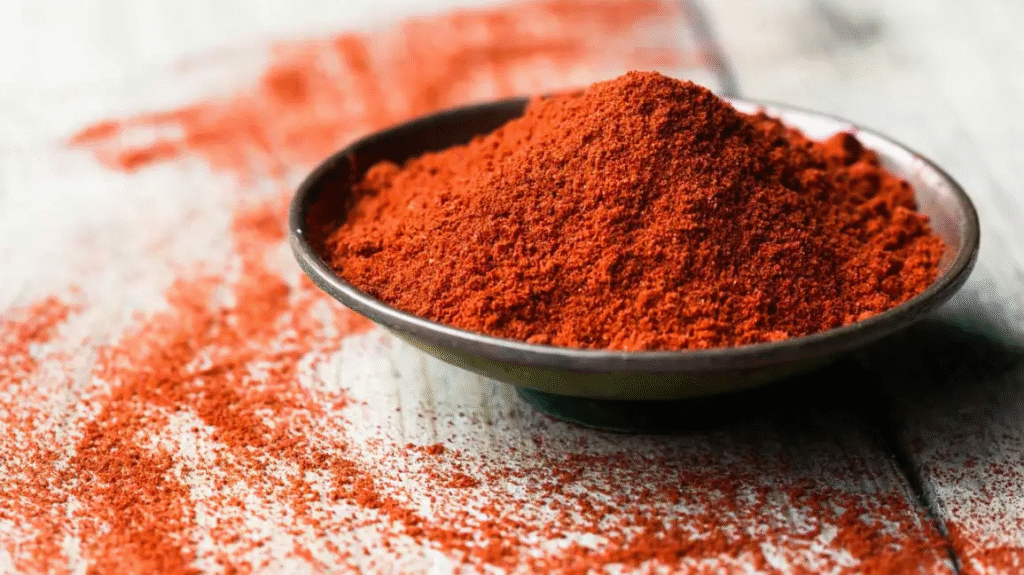This surprisingly common spice has a secret origin, and the story might just make you chuckle — or rethink your spice rack.
Sometimes, the smallest moments in life spark the biggest smiles — and remind us how endlessly fascinating our everyday world can be. That’s exactly what happened during a recent conversation with my mother-in-law, who shared a delightful story that had us both laughing and shaking our heads.
It all started with a spice — paprika, to be exact. Her friend, a kind-hearted woman in her 70s, had been using the bright red powder in her kitchen for decades. She loved sprinkling it over deviled eggs, tossing it in soups, and giving baked potatoes a bit of color. But until that very conversation, she had no idea what paprika actually was. When she found out it came from peppers, she was floored — and the realization sent them both into fits of laughter.
So what is paprika, really? And why do so many of us not know the answer?
Let’s uncover the spicy little secret behind this pantry favorite — and along the way, explore the health benefits of paprika, its rich history, and a few fun facts that might surprise even the most seasoned home cooks.
So, What Exactly Is Paprika?

If you’ve always thought of paprika as “just a red spice,” you’re in good company. It’s one of those seasonings we often use without thinking too much about. But paprika is more than just a colorful garnish — it’s a versatile spice with a story all its own.
Here’s the scoop:
Paprika is made from dried peppers — yes, peppers! Specifically, it comes from a variety of red bell peppers and chili peppers (all part of the Capsicum annuum family). These peppers are harvested, dried, and then ground into a fine powder.
Depending on how it’s made and where it comes from, paprika can have a wide range of flavors:
- Sweet and mild, like the classic Hungarian varieties
- Rich and smoky, especially in Spanish smoked paprika
- Hot and spicy, for those who like a little kick
That little bottle in your spice rack may carry centuries of tradition and flavor from kitchens across Europe and the Americas. Whether you’re making goulash, paella, roasted chicken, or just sprinkling it on potato salad, paprika adds more than just color — it brings warmth, depth, and a gentle touch of heat.
The Funny Part: When a Spice Reveals Its Secret
Now, back to the story that started it all.
Picture this: my mother-in-law explaining that paprika comes from peppers — the same peppers you slice into a stir-fry or stuff with cheese. Her friend blinked in disbelief. “You’re joking,” she said, half-laughing, half-confused. “I thought it was just…paprika!”
“She looked at me like I was pulling her leg!” my mother-in-law told me. “Then we spent the rest of the afternoon laughing about it, swapping stories about cinnamon bark and vanilla pods.”
And honestly, isn’t that one of life’s joys? Finding humor in the little gaps in our knowledge, sharing stories over tea, and realizing that even after decades in the kitchen, there’s always something new to learn.
Paprika Isn’t Just Pretty — It’s Packed with Health Benefits
While the flavor of paprika is enough reason to use it, the real surprise might be what it does for your health.
Paprika is one of those anti-inflammatory spices that nutritionists quietly rave about — especially for older adults looking for gentle, natural ways to support their well-being.
Here’s what makes paprika so powerful:
1. Rich in Antioxidants
Paprika contains powerful antioxidants like capsanthin, carotenoids, and flavonoids, which help fight oxidative stress in the body. This is especially helpful for aging cells, as it can slow signs of aging and support long-term health.
2. A Natural Source of Vitamin C
Believe it or not, paprika is packed with vitamin C — sometimes more than citrus fruits! That means it helps boost your immune system, support skin health, and aid in wound healing.
3. Contains Capsaicin for Pain Relief
Capsaicin, found in spicier paprika varieties, is known for its natural pain-relieving properties. It can help reduce inflammation and is often used in topical creams to ease arthritis and joint pain.
4. Good for Circulation and Heart Health
The compounds in paprika may support healthy blood flow and reduce blood pressure, making it a heart-friendly spice worth keeping on hand.
So next time you’re reaching for a comforting soup or roasted vegetables, don’t just sprinkle paprika for the color — sprinkle it for your health, too.
Fun and Flavorful Facts About Paprika
Let’s lighten things up with a few spicy tidbits about this amazing seasoning:
- Not all paprika is created equal. Hungarian paprika comes in several varieties, from sweet (édes) to hot (erős), and chefs often combine them to get the perfect flavor balance.
- Smoked paprika (also called pimentón) is dried over oak fires, giving it a deep, smoky aroma that transforms stews, meats, and even scrambled eggs.
- It’s often used in spice blends like BBQ rubs, taco seasoning, and even some curry powders.
- Some gourmet paprikas contain bits of the pepper skin, giving the powder a coarser texture and richer flavor.
- Paprika has been used as a dye. That deep red color has been known to tint textiles — and fingers — with its vibrant hue.
A Little Knowledge Goes a Long Way
We’ve all had moments like my mother-in-law’s friend — discovering that something we’ve used for years has a hidden backstory. And honestly? That’s part of the fun of growing older. We get to rediscover the world with fresh eyes, laugh at ourselves, and pass along stories that might make someone else smile.
So the next time you dust paprika across a casserole or stir it into a simmering stew, you’ll know exactly what you’re adding: a little piece of peppery history, rich with flavor, tradition, and even a few unexpected health benefits.
And maybe — just maybe — you’ll share the story, too.


